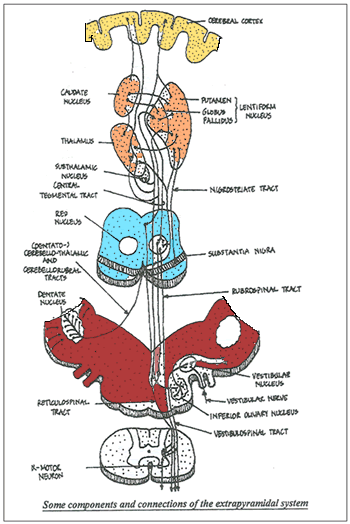 The extrapyramidal system is a complex motor system that lies parallel to the pyramidal system.
The extrapyramidal system is a complex motor system that lies parallel to the pyramidal system.
The pyramidal system forms the networks that extend from your brain to your muscles, which control voluntary, organised movement. The extrapyramidal system lies parallel to this and controls, stance, locomotion and balance.
The extrapyramidal system effectively stabilises you, allowing you to perform tasks you’re choosing to do without having to think about not falling over. It allows for postural adjustments and fine tunes small muscles in your spine and limbs.
People who experience tics, Parkison’s disease, tremor or dystonia (involuntary muscle movements) have a problem with the extrapyramidal system.
The extrapyramidal system extends from the brain (cerebral cortex) through the basal ganglia, to the brainstem, and onto the spinal cord and small muscles. The basal ganglia between the brain and brainstem serve as a “gate” between rest and postural control. Too many or too few messages passing through this gate cause a fault in the postural software. As a result, movement errors occur, such as tremor, tics or shaking.
References:
de Oliveira-Souza, R. The human extrapyramidal system. Medical Hypotheses. 2012. 79: 843-852.
Blood, AJ., et al. Evidence for altered basal ganglia-brainstem connections in cervical dystonia. 2012. PLoS ONE 7(2): e31654.
